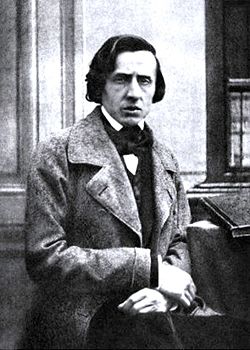Yet it is not totally out of tempo. Sometimes it slows down to be more expressive. But sometimes when it slows down too much, the performer would speed up to catch up with the tempo.
The purpose is to make the melody /music sound more expressive and natural , in contrast to the strict mechanical timing of a piece of written music.
We can use Rubato in the melody or even the rhythm.
Chopin said this about musicians who plays mechanically.
It is amusing to note that even some serious persons express the idea that in tempo rubato "the right hand may use a certain freedom while the left hand must' keep strict time." (See Niecks' Life of Chopin, II, p. 101.) A nice sort of music would result from such playing ! Something like the singing of a good vocalist accompanied by a poor blockhead who hammers away in strict time without yielding to the singer who, in sheer despair, must renounce all artistic expression.
Facts about Rubato
- there is no fixed rhythm or formula for rubato
- everything depends on the singer's / musicians' spontaneous musical creativity.
- Same kind of rubato should not be repeated in the same song or this would defeats its purpose of being creative and spontaneous
- It softens the sharpness of lines, blunts the structural angles without ruining them, because its action is not destructive: it intensifies, subtilizes, idealizes the rhythm.
In Swing , Big Band , Blues and other black music of USA, the melody is usually slowed slightly compared to the accompanying music. The result is a slaggard , lazy , relaxing music.
But in Latin Son Music i.e. Cuban , Carribean , Cha-cha , Rhumba , Bossanova etc. the melody is sped up slightly to produce an active , rushing , urgent carnival-like environment.


No comments:
Post a Comment